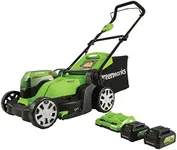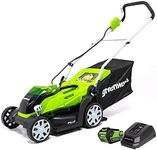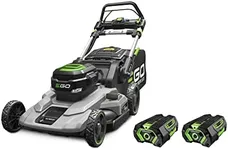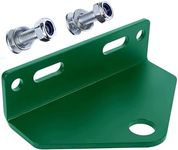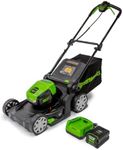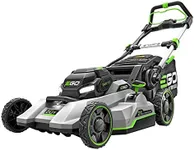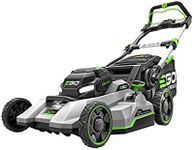Buying Guide for the Best Electric Lawn Mowers
Choosing the right electric lawn mower can make yard work much easier and more enjoyable. The best mower for you depends on the size of your lawn, the type of grass you have, and how much effort you want to put into mowing. Electric mowers are quieter, cleaner, and require less maintenance than gas models, but there are still important differences to consider. Understanding the key features will help you find a mower that fits your needs and makes lawn care a breeze.Power Source (Corded vs. Cordless)Electric lawn mowers come in two main types: corded and cordless. Corded mowers plug into an outlet and offer unlimited run time, but you are limited by the length of the cord and need to manage it while mowing. Cordless mowers use rechargeable batteries, giving you more freedom to move around, but their run time is limited by battery capacity. If you have a small to medium yard with easy access to power outlets, a corded mower can be a good choice. For larger yards or if you want to avoid dealing with cords, a cordless mower is more convenient, but you should consider how long the battery lasts and how long it takes to recharge.
Cutting WidthCutting width refers to how wide a strip of grass the mower can cut in one pass. Wider cutting widths mean you can mow your lawn faster, but the mower may be heavier and harder to maneuver in tight spaces. Narrower cutting widths are better for small lawns or areas with lots of obstacles. If you have a large, open yard, a wider cutting width will save you time. For smaller or more complex lawns, a narrower width gives you better control and precision.
Battery Life (for Cordless Models)Battery life determines how long a cordless mower can run before needing a recharge. This is usually measured in minutes. Longer battery life is important for larger lawns, so you can finish mowing in one go. For small lawns, shorter battery life may be enough. When choosing, think about how long it typically takes you to mow your lawn and look for a mower with a battery that can handle that time. Some models offer removable batteries, so you can swap in a spare if needed.
Grass Management (Bagging, Mulching, Side Discharge)Electric mowers handle grass clippings in different ways: bagging collects clippings in a bag for easy disposal, mulching chops them finely and returns them to the lawn as natural fertilizer, and side discharge spits them out to the side. Some mowers offer all three options, while others may only have one or two. If you want a tidy lawn with no clippings left behind, bagging is best. If you prefer to fertilize your lawn naturally, look for a mulching feature. Side discharge is useful for quickly mowing large areas where clippings can be left on the ground.
Cutting Height AdjustmentCutting height adjustment lets you choose how short or tall you want your grass to be. This is important because different types of grass and seasons may require different mowing heights. Some mowers have a single lever to adjust all wheels at once, while others require adjusting each wheel separately. If you like to change your mowing height often, look for a mower with easy, single-lever adjustment. If you always mow at the same height, this feature may be less important.
Weight and ManeuverabilityThe weight of the mower affects how easy it is to push and turn, especially if your yard has slopes or tight corners. Lighter mowers are easier to handle but may not be as sturdy for tough grass. Heavier mowers can be more stable but may require more effort to move. If you have a small, flat yard, a lightweight mower is usually best. For larger or uneven lawns, a heavier mower may give you better results, but make sure you can comfortably push it.
Noise LevelElectric mowers are generally quieter than gas models, but there can still be differences in noise level. If you live in a neighborhood with noise restrictions or prefer a quieter mowing experience, look for models that are specifically designed to be quiet. This is especially important if you plan to mow early in the morning or late in the evening.

